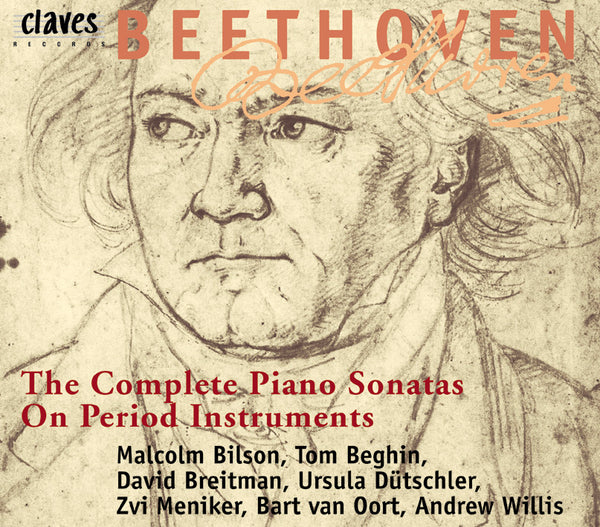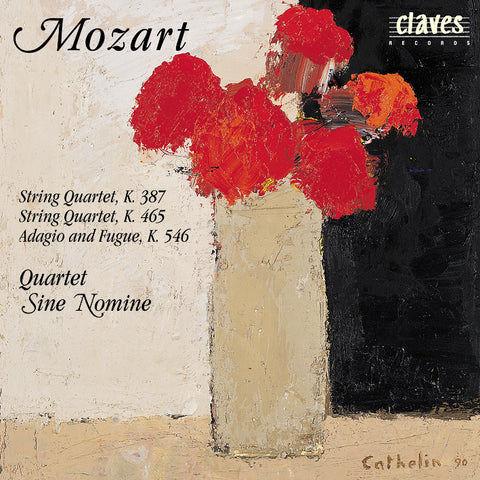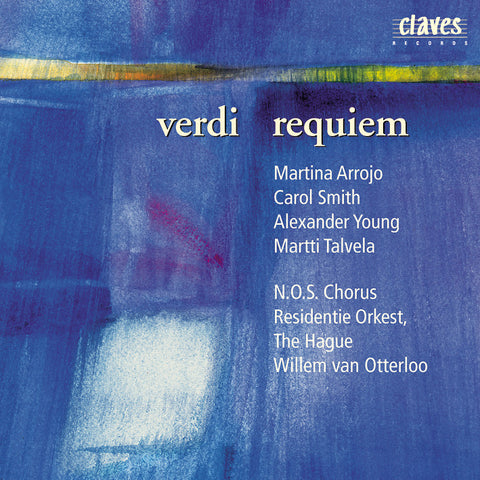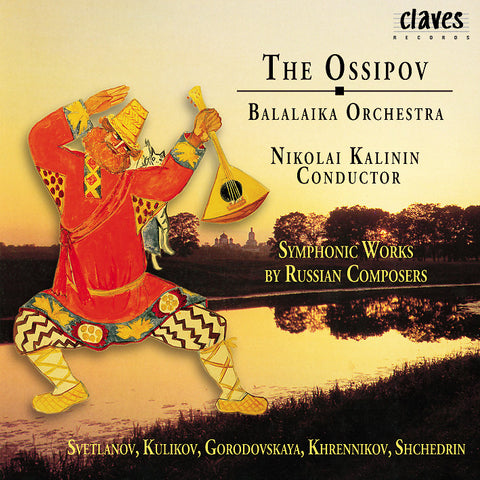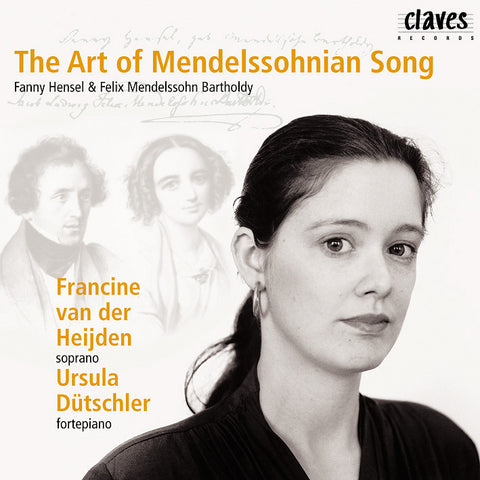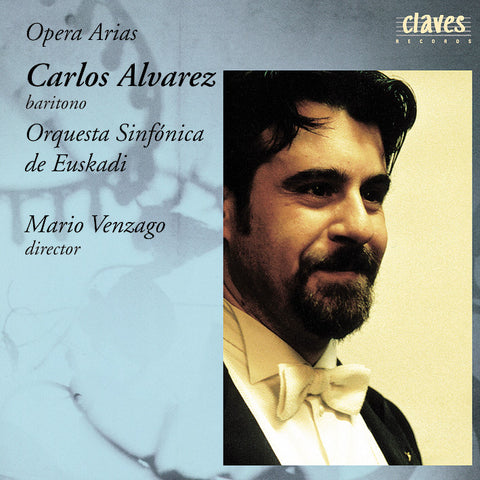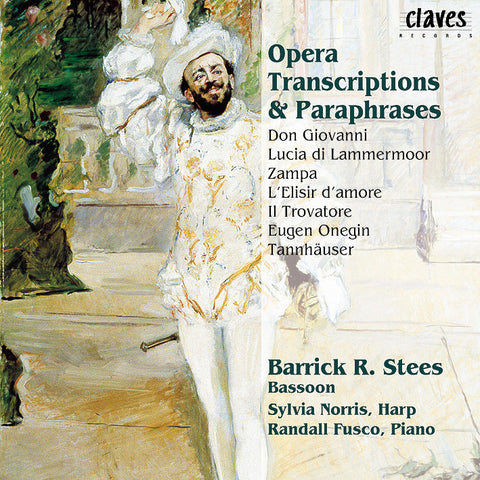(1997) Beethoven : The Complete 32 Piano Sonatas on Period Instruments (In addition, the three Bonn - Kurfürsten - Sonatas)
CD set: 10
Catalog N°:
CD 9707-10
EAN/UPC: 7619931970721
This album is now on repressing. Pre-order it at a special price now.
CHF 170.00
This album is no longer available on CD.
This album has not been released yet. Pre-order it from now.
CHF 170.00
This album is no longer available on CD.
This album is no longer available on CD.
VAT included for Switzerland & UE
Free shipping
This album is now on repressing. Pre-order it at a special price now.
CHF 170.00
This album is no longer available on CD.
This album has not been released yet.
Pre-order it at a special price now.
CHF 170.00
This album is no longer available on CD.
This album is no longer available on CD.
BEETHOVEN : THE COMPLETE 32 PIANO SONATAS ON PERIOD INSTRUMENTS (IN ADDITION, THE THREE BONN - KURFÜRSTEN - SONATAS
Serious pianists study every aspect of these works in minute detail; virtually everything is taken into account except those instruments which inspired Beethoven, and which he had in mind when he composed. Instruments, in the plural – because in the 27 years during which these works came into being changes in Viennese piano construction were dramatic, from the 5-octave Walter type known to Mozart, through the somewhat heavier and more resonant six-octave pianos, to the six-and-one-half-octave Graf-type Beethoven had when he composed the last five sonatas – now more than twice the weight of Mozart’s Walter!
The first 16 sonatas, up to Opus 31/1 inclusive, were written for a five-octave instrument. Most of these works, and all three Bonn [Kurfürsten] sonatas will be heard here on copies of pianos by Walter. Interestingly, the early sonatas can forfeit much of their crispness when played on a 1825 Graf, and the later sonatas (even those passages from them that can be played on the 5-octave instrument) lose a great deal in richness and early 19th-century sentiment when played on a Walter.
Nine fortepianos were used for these recordings; some of them copies, some restored originals. Now the French say c’est le ton qui fait la musique, but in the case of Beethoven one might rather assert that it’s the gesture that through the sound makes the music. These earlier instruments can suggest very different gestures from those proffered by the modern piano, and can lead the player down quite different paths of expression.
The study of Beethoven’s manuscripts and the first editions of his works may well be of great importance when approaching his music, yet one’s interpretation of those sources can change dramatically when the touch and timbre of the contemporary instrument are in one’s ears and under one’s fingers.
These performances are not meant in any way to be considered more authentic or more original (or any other mores) than the best performances on modern pianos. My colleagues and I have worked together and exchanged ideas, but what you will hear on these discs represents personal decisions and individual interpretations on the part of each player; there is no «party line».
We would like to consider these performances as a first step toward a fresh evaluation of this repertoire, one that might open up new paths of thought and suggest untried expressive possibilities in the interpretation of these signal works.
«The seven pianists on this recording seem to be inspired by their instruments without being burdened by the significance and magnitude of their enterprise. Listening is a true pleasure in this expedition into new musical realms.» This beautiful edition contains more than 11 1/2 hours of music and is accompanied by a fascinating, extensively illustrated booklet nearly 200 pages in length with an introduction by Malcolm Bilson and texts by the pianists about the works in three languages.
«The Bonn and the early sonatas, for example, are performed on instruments from Mozart’s era, thereby profiting from very bright, precisely nuanced, and at times ringing sonorities. The later sonatas, on the other hand, are much more massive, yet filled with warmer colors and, at times, with unusual details, e.g., the rather abrupt pedaling of these older instruments produces sforzato effects that are impossible to achieve on modern instruments, in any case, one never hears them.
The brilliantly recorded 10 CDs and the exemplary organized accompanying booklet invite to a more profound study of the fascinating universe of Beethoven’s piano sonatas. It is exciting to observe how the same instrument can produce completely different sonorities in the hands of different pianists, or how two pianists can interpret two chronologically similar sonatas in very different and yet equally convincing manners.»
(Schweizer Musikzeitung)
(1997) Beethoven : The Complete 32 Piano Sonatas on Period Instruments (In addition, the three Bonn - Kurfürsten - Sonatas) - CD 9707-10
Now many of the world’s most serious and significant pianists (Schnabel, Serkin, Brendel, Goode, etc.) have devoted a great deal of thoughtful study to the Beethoven sonatas; in general, performance of this music represents a level of erudition and deep contemplation probably unequaled by the works of any other mainstream composer.
Serious pianists study every aspect of these works in minute detail; virtually everything is taken into account except those instruments which inspired Beethoven, and which he had in mind when he composed. Instruments, in the plural – because in the 27 years during which these works came into being changes in Viennese piano construction were dramatic, from the 5-octave Walter type known to Mozart, through the somewhat heavier and more resonant six-octave pianos, to the six-and-one-half-octave Graf-type Beethoven had when he composed the last five sonatas – now more than twice the weight of Mozart’s Walter!
The first 16 sonatas, up to Opus 31/1 inclusive, were written for a five-octave instrument. Most of these works, and all three Bonn [Kurfürsten] sonatas will be heard here on copies of pianos by Walter. Interestingly, the early sonatas can forfeit much of their crispness when played on a 1825 Graf, and the later sonatas (even those passages from them that can be played on the 5-octave instrument) lose a great deal in richness and early 19th-century sentiment when played on a Walter.
Nine fortepianos were used for these recordings; some of them copies, some restored originals. Now the French say c’est le ton qui fait la musique, but in the case of Beethoven one might rather assert that it’s the gesture that through the sound makes the music. These earlier instruments can suggest very different gestures from those proffered by the modern piano, and can lead the player down quite different paths of expression.
The study of Beethoven’s manuscripts and the first editions of his works may well be of great importance when approaching his music, yet one’s interpretation of those sources can change dramatically when the touch and timbre of the contemporary instrument are in one’s ears and under one’s fingers.
These performances are not meant in any way to be considered more authentic or more original (or any other mores) than the best performances on modern pianos. My colleagues and I have worked together and exchanged ideas, but what you will hear on these discs represents personal decisions and individual interpretations on the part of each player; there is no «party line».
We would like to consider these performances as a first step toward a fresh evaluation of this repertoire, one that might open up new paths of thought and suggest untried expressive possibilities in the interpretation of these signal works.
«The seven pianists on this recording seem to be inspired by their instruments without being burdened by the significance and magnitude of their enterprise. Listening is a true pleasure in this expedition into new musical realms.» This beautiful edition contains more than 11 1/2 hours of music and is accompanied by a fascinating, extensively illustrated booklet nearly 200 pages in length with an introduction by Malcolm Bilson and texts by the pianists about the works in three languages.
«The Bonn and the early sonatas, for example, are performed on instruments from Mozart’s era, thereby profiting from very bright, precisely nuanced, and at times ringing sonorities. The later sonatas, on the other hand, are much more massive, yet filled with warmer colors and, at times, with unusual details, e.g., the rather abrupt pedaling of these older instruments produces sforzato effects that are impossible to achieve on modern instruments, in any case, one never hears them.
The brilliantly recorded 10 CDs and the exemplary organized accompanying booklet invite to a more profound study of the fascinating universe of Beethoven’s piano sonatas. It is exciting to observe how the same instrument can produce completely different sonorities in the hands of different pianists, or how two pianists can interpret two chronologically similar sonatas in very different and yet equally convincing manners.»
(Schweizer Musikzeitung)
Return to the album | Read the booklet | Composer(s): Ludwig van Beethoven | Main Artist: Malcolm Bilson







